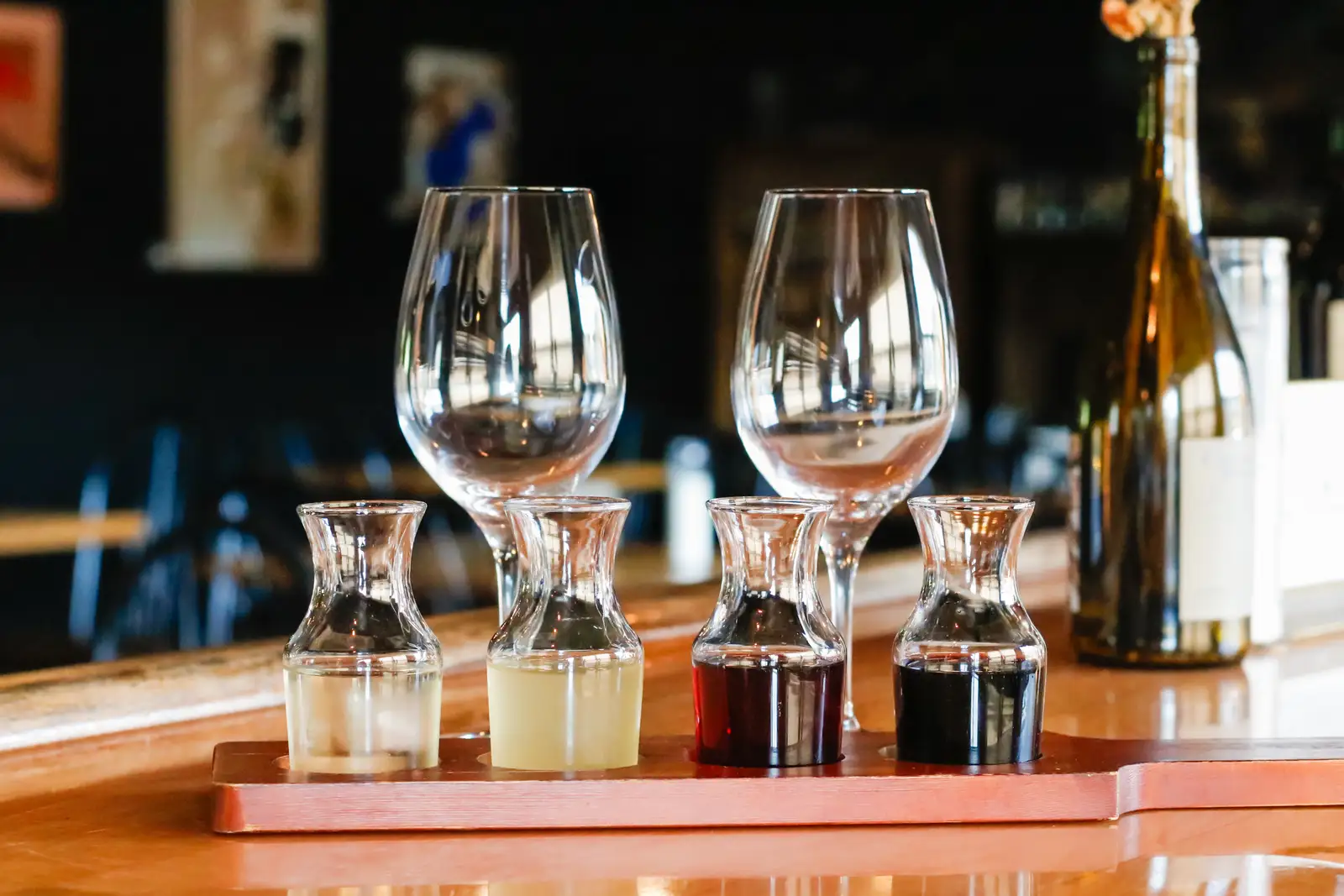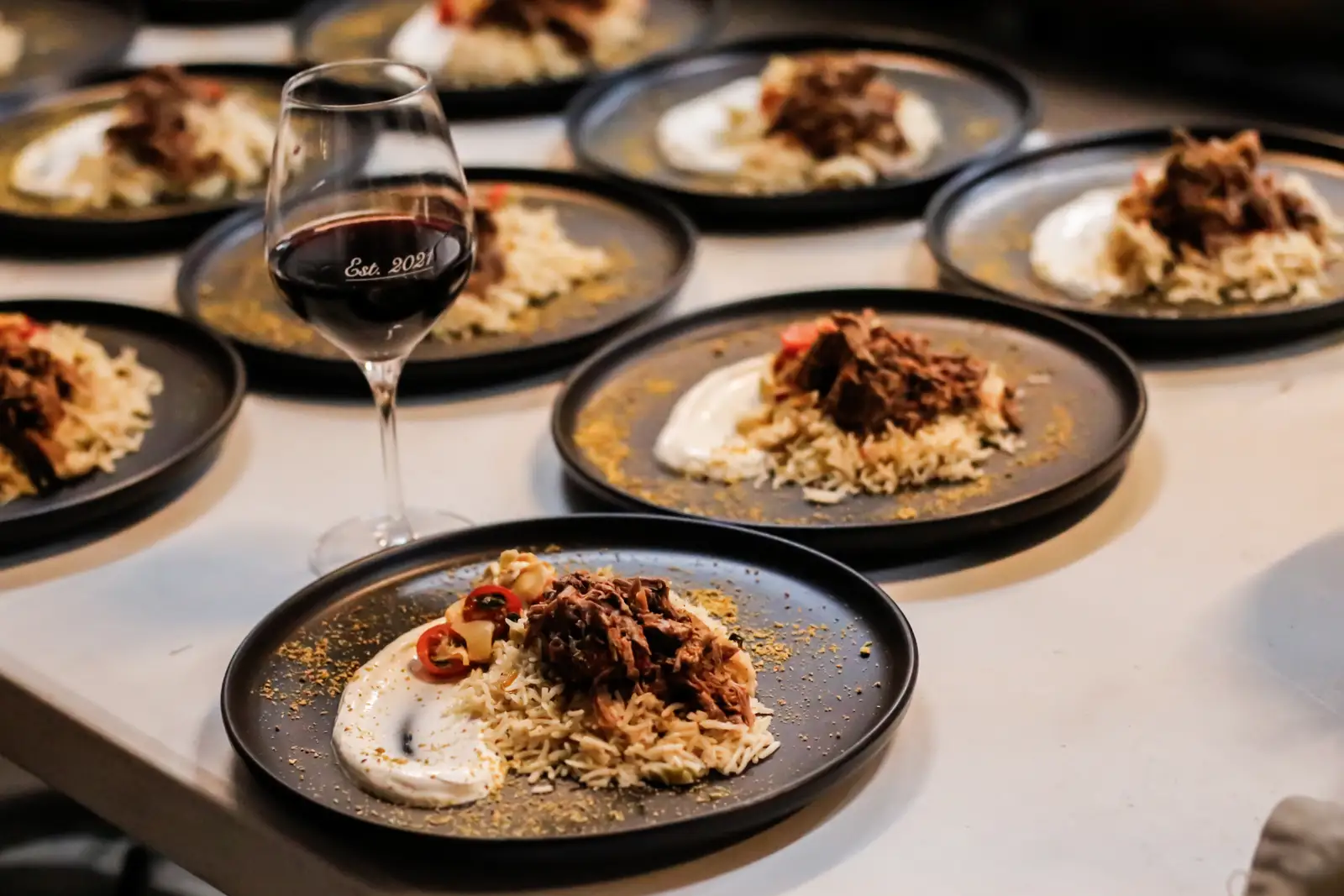Every harvest season at Cellar Beast Winehouse, the wine production process takes center stage. In this behind-the-scenes look, we explore the day-to-day activities that bring our wines to life. Winemaking at Cellar Beast Winehouse is an expression of passion for wine, attention to detail, and the love of our local terroir leading to award-winning wines. From sun up till sundown, our focus remains on wine production, ensuring that every bottle tastes like our intention.
Early Morning: Vineyard Care and Sourcing
The winemaking process starts in the vineyards of wine country. You can find us in the early morning in the rolling hills of Andreas, PA checking the vine: pruning in winter, canopy management to allow each cluster to get the best of the sun in summer, checking ripeness as the days grow shorter. With each microclimate that makes up each of our vineyards, we create the wines that are special to each site. Our commitment to a sustainable wine industry is reflected in every decision we make.
Alongside our estate vineyard wine offerings, we source premium wine grapes from the West Coast. In addition to visiting their vineyards in the off-season, we talk to our growers every day during harvest. That communication ensures we, as the wine producers, can pick at the right moment, and key data such as pH (acidity), Brix (sugar to determine potential alcohol) and tannin development (structure, ageability) help us make that choice.

Late Morning: Grape Harvesting and Sorting
Wine grapes are hand-picked (as opposed to using mechanical harvesters which result in excessive MOG) when they are at their best ripeness, and then they are sorted out very carefully to choose the best grapes in order to make strong base for each wine. This is why we can say that our wines are made with full respect to the terroir.
Afternoon: Fermentation and Monitoring
After the red grapes are destemmed, the berries are then transferred to either fermentation tanks or macro bins. White grapes are first pressed and then transferred to the fermentation vessels and then to stainless steel tanks for white wines. Rosé wines are created by pressing red grapes into grape juice and avoiding grape skin contact. At this point, the real winemaking magic takes place. A winemaker monitors the alcoholic fermentation process and controls the temperature, as well as numerous other variables, in order to help each wine reach desired alcohol levels. Whether it is a white wine that needs a crisp style or a red that needs a bit more of the texture that an oak barrel will produce, alcoholic fermentation control is just one of the many elements for which a winemaker is responsible.
Our team used French yeast strains to create the specific types of wine, Loire Valley, Burgundian, etc. and careful monitoring is required at the beginning of fermentation. The grapes need to reach a certain temperature in order for the cultured yeast to take over and turn sugar into alcohol and produce carbon dioxide, but there is a narrow window before wild yeast take hold and create a more spontaneous fermentation (which is actually used for our natural wines).

Evening: Barrel Aging and Tasting
It is in aging that the wine’s complexity matures. Exceptional wines might be transferred into oak barrels – almost exclusively French oak barrels – to develop subtle, nuanced flavors. We conduct wine tastings regularly as they age, to measure their development and decide when to bottle them. The wooden barrel characteristics can range from vanilla to spice, depending on the variety of the wine and how long the wine ages. Malolactic fermentation for Chardonnays and red wines takes place in the barrel, for more information on malolactic fermentation and alcoholic fermentation, please see our more in-depth wine production article.

Community Ties: Local Terroir and Collaboration
Cellar Beast is connected to the community. We grow our own estate white grapes, purchase premium grapes from West Coast growers, use local partners as much as possible (such as our collaboration with Eight Oaks), and celebrate the ecological and agricultural distinctiveness of our region.
The Final Product: Bottling and Sharing
There are many basic steps towards the later half of the wine making process to include the clarification process, tartaric acid levels, checking final sugar content (critical for dry wines), and alcohol levels. Bottling the finished wine is one of the final stages of wine production following months – even years – of work. With every bottle of wine we create our desire is to make a wine that reflects our commitment. From Sauvignon Blanc, Pinot Noir to Syrah, we take pride in grape varieties that reflect our Old World French style to our customers.
Cellar Beast Winehouse develops finished wines that reflect our deep passion for wine and the winemaking process, from vine through primary fermentation and malolactic fermentation to table. Have a look at Our Wines to discover about our assortment and leave the wine trail for a stop by the Winehouse for a glass of wine, food trucks, wine classes, and stunning views with acres of vineyard. If you want to taste quality wine bottles at their best from one of the finest wineries in the United States, join our Wine Club, and you’ll be the first of the wine lovers to hear about our special releases and events.




